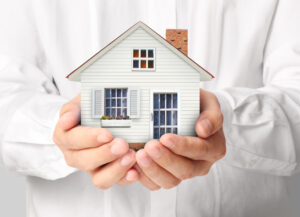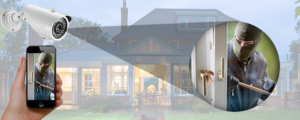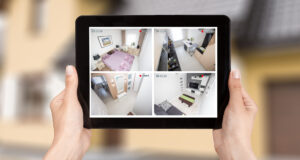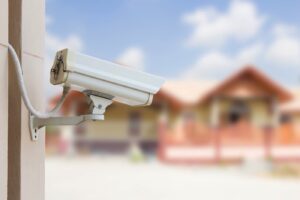
Adding outdoor surveillance to your home security solution can be a practical and economical way to protect and secure your home. However, there are many options for consumers to sift through and not every home has the same outdoor surveillance needs.
We’ve put together this comprehensive guide to help you identify your home surveillance needs and choose the best outdoor surveillance cameras for your home.
What to consider for your outdoor surveillance system
One of the most important features of an outdoor security camera is whether it’s been rated weatherproof and waterproof. However, there are several other factors to consider when choosing an outdoor surveillance camera for your home.
Here are some questions you’ll need to consider to help you choose the best outdoor surveillance system for your home.

· How much outdoor surveillance coverage do you need?
The camera’s viewing angle determines how much space the camera will cover. Wider angled lenses help cut down on the number of cameras required for overall coverage of your property. Depending on the coverage you need and each camera’s viewing angle, you may need to purchase multiple cameras or multi-packs to monitor more space around your home.
· Does the camera have high-quality video resolution?
Another factor to consider when outdoor surveillance camera shopping is the camera’s resolution. The higher the camera resolution, the clearer and easier the images will be to see. Ideally, you’ll want 1080p or higher resolution for the clearest images. Keep in mind that if you connect your camera to a DVR or other recording device, it will also need to be HD compatible in order to keep the image at a high quality.
· Does the security camera have night vision?
Monitoring at night is one of the most common uses for outdoor surveillance cameras, and in order to get a high-quality image, you’ll want to purchase a camera with infrared (IR) technology. Many models have a built-in IR cut-switch that automatically enables and disables the infrared technology depending on the lighting conditions. The number of infrared LEDs used in a camera will help determine how far of a night vision range a camera has.
· What’s the best camera style for your needs?
There are two main styles of outdoor security cameras — dome or bullet. Both camera styles are fairly obvious to potential intruders, however, it is more difficult to determine which direction a dome-style camera is pointing, which may help deter a potential intruder. Another thing to keep in mind regarding camera style is whether you want to mount it on the ceiling or wall.
· Does the camera have sufficient recording capacity?
If you want to watch a playback of the goings-on around your home, you’ll need a camera with onboard storage capacity or cloud recording capabilities. Most cameras with recording capabilities have an onboard SD or microSD slot that allows for sufficient recording space.
Some systems also record to DVD or mini-disc, but most are now transitioning to DVR (digital video recorder) technology. A computer-based camera system records your video to the PC’s hard disc, making it fast and easy to review your video history.
· Do you want to access your camera with a mobile device?
Many outdoor surveillance cameras available today are able to live stream a feed directly to your mobile device. If you want to be able to check in during the day or while away for extended periods, this is a valuable feature to have. Be sure to choose a camera that is compatible with your device.

·Do you want a wired or wireless security camera?
Wireless cameras are easy to install and reposition, but you’ll want to check the battery levels periodically to ensure you’re fully protected. Wired units usually require professional installation and access to a power outlet, but tend to provide clearer images than their wireless counterparts.
·Does the camera have pan/tilt/zoom features?
Cameras with remote controlled pan, tilt and zoom are ideal for providing coverage to larger areas and allow the user to get the best viewing angle possible without having to physically reposition the camera.
·Do you want a camera with energy saving features?
Surveillance cameras can eat up a lot of energy, but if you find a model that only records when motion is detected, it can help to cut down on operating costs. Many models will even send you push or email notifications when something out of the ordinary is detected, so you don’t need to be continually monitoring yourself.
·How much do you want to spend?
You can get a CCTV security system for as little as $99, but this is probably a case of “you get what you pay for.” A good-quality, basic system (one camera) typically costs between $100-200 and can climb to thousands of dollars for multi-camera, indoor/outdoor, fancy systems with every feature imaginable.
What are the benefits of a video surveillance system?
The best thing about a home video surveillance system is the extra sets of eyes. How many times has someone left home and realized twenty minutes later that the thermostat wasn’t turned off or that the front door was unlocked? Perhaps the nanny is new and the ability to check in would be invaluable. Each family’s individual needs will dictate unique benefits.
- 24/7 surveillance capabilities everywhere a camera is installed
- Recording feature keeps a log of past events
- “See” other areas of the house or areas outside from anywhere
- “Watch” for kids to arrive home from school
- Check in on elderly relatives’ safety
- Monitor pets’ activity
- See who’s outside the door
How does video surveillance security work?
A surveillance security system will typically consist of several cameras connected—either hardwired or wireless— to a digital video recorder (DVR), which records the images and displays them on a monitor. The monitor may be a closed circuit television, which can be monitored from the home, or the DVR can send the images to a web-enabled device such as a computer, tablet or smartphone, where they can be watched live or upon demand.
Video surveillance features
While there are many bells and whistles available for home video surveillance systems, the individual mandates of home and family members make choosing relatively simple. The size of a property, the age of family members, and even the safety of a neighborhood are a few things to consider. A few worthwhile features are listed below:
- Motion detectors
- Night vision
- Recording capability
- High-resolution photography for clearer viewing
- Microphones and/or speakers
- Weather and/or vandal proof cameras
- Remote alerts
- Expandable to accept additional cameras to the system
Should I get video surveillance?

A video surveillance system is an invaluable part of any home security system. Both the ability of day-to-day connection to your home and family and the stepped up protection from intruders make it beneficial for nearly anyone. So, who should consider this extra set of eyes?
- Homeowners looking for a 24/7 visual connection to home and family
- Anyone who is away from home all day or travels frequently
- Families with several people coming and going often—gardeners, housekeepers, babysitters
- Families with elderly members, infants, or small children and pets who may need monitoring from different parts of the home
- Homeowners who want the added security and peace of mind that come with video surveillance
Wrap up: Best outdoor surveillance cameras for your home
There is no one-size-fits-all to home surveillance. The system you choose will be based on your budget, your home’s layout, your climate, your security concerns, and other factors. Start your search with a basic idea of what you want and a reasonable budget, and then get researching. Different systems, even those in the same price range, mix and match features differently, so keep looking until you find one that offers what you need at a price you can afford.
Source: Safety.com Magazine



































































